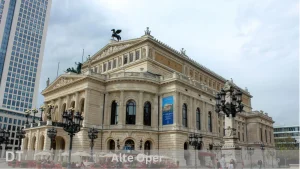Annette Frier, the well-known German actress and comedian, is known not only for her impressive performances on stage and on television, but also for her courageous handling of a serious health crisis. In September 2022, 48-year-old Frier suffered a stroke that significantly affected her life and career. In this article, we take a detailed look at the effects of the stroke on Annette Frier, her treatment and rehabilitation, as well as her public perception and how she dealt with this difficult experience.
What is a stroke
A stroke, also known as a cerebrovascular accident, occurs when the blood supply to the brain is interrupted. This can be caused by a blood clot (ischemic stroke) or by bleeding in the brain (hemorrhagic stroke). According to the German Stroke Association, around 270,000 people in Germany suffer a stroke every year. Symptoms can occur suddenly and often include:
- Weakness or numbness in the face, arm or leg, especially on one side of the body.
- Confusion or difficulty speaking and understanding.
- Visual disturbances in one or both eyes.
- Unsteady gait or difficulty walking.
- Headaches that come on suddenly and are intense.
The severity of the symptoms and the associated impact on daily life can vary greatly. According to the Robert Koch Institute (RKI), stroke is the third most common cause of death in Germany, after cardiovascular disease and cancer.
Annette Frier’s stroke
Annette Frier experienced her stroke in September 2022, which came as a huge surprise to her fans and the public. The actress later reported in interviews that she did not take the symptoms seriously at first. This is a common problem as many people do not immediately recognize the symptoms of a stroke. Prompt medical intervention is crucial to minimize permanent damage.
Frier was immediately admitted to a specialized hospital where she received comprehensive medical treatment. Early treatment is crucial to reducing the impact of a stroke. Studies show that treatment within the first three hours of symptoms onset produces the best results.
Treatment and rehabilitation
The treatment of a stroke can be divided into several phases:
- Acute treatment : This involves giving medications to dissolve blood clots or control bleeding. Drugs such as thrombolytics are often used to dissolve blood clots that are blocking the blood supply to the brain.
- Rehabilitation therapy : Includes physical, speech and occupational therapy. These therapies help to regain lost skills and improve quality of life. According to the German Stroke Association, about 50-70% of stroke patients depend on rehabilitation to restore their quality of life.
- Drug therapy : To prevent further strokes and to treat risk factors such as high blood pressure or diabetes. Long-term drug therapy can help reduce the risk of another stroke and improve overall health.
Annette Frier underwent an intensive rehabilitation program that included both physical and speech therapy. Her therapy was designed to improve her motor skills and regain her communication skills. Studies show that continuous rehabilitation often leads to significant progress in recovery.
Public reactions and support
The news of Annette Frier’s stroke and subsequent rehabilitation was widely covered in the media. The public reacted with great sympathy and support. The actress received numerous messages from fans and colleagues who admired her bravery and her fight.
Frier used her platform to raise awareness about stroke. In interviews, she spoke openly about her experience and encouraged others to watch for the signs of a stroke and seek help early. Her openness has helped raise awareness of this serious health threat and inspire others to take their health seriously.
How Annette Frier rebuilt her life after a stroke
Annette Frier has not only focused on her physical recovery, but also on adapting her lifestyle after the stroke. These include:
- Healthy diet : A balanced diet is crucial to reducing risk factors for stroke. This includes a diet rich in fruits, vegetables, whole grains and lean protein. Studies show that a heart-healthy diet can significantly reduce the risk of further strokes.
- Regular exercise : Adjusted physical activity is important for recovery and overall well-being. The American Heart Association recommends at least 150 minutes of moderate physical activity per week for adults to improve heart health and prevent stroke.
- Mental health : Psychological support and support groups play an important role in coping with the emotional impact of a stroke. Dealing with the emotional and psychological challenges can be just as important as physical rehabilitation.
Frier has stressed in interviews how important it was to focus on her recovery and take the time necessary to fully recover. Her story is a testament to the power of human will and the importance of a comprehensive rehabilitation approach.
Future outlook
Annette Frier has been steadily recovering over the past few years and is slowly returning to the public eye. Her story serves as an inspiration to many people who struggle with the challenges of a stroke. The actress plans to continue to share her experience publicly to raise awareness about stroke and help others who may be going through similar challenges.
Frier shows that it is possible to make a remarkable recovery after a stroke if you receive the right support and therapy. Her return to work and commitment to stroke education are a significant contribution to raising awareness and supporting stroke survivors.
Conclusion
Annette Frier’s handling of her stroke is a powerful example of strength and resilience. Her courage in sharing her story and her commitment to stroke education have helped raise awareness of this serious health threat. Her recovery is a long-term process that includes both physical and emotional challenges. Nevertheless, Annette Frier remains a symbol of hope and determination, and her experience offers valuable lessons for anyone facing the effects of a stroke.
Authentic questions and answers
Question 1: What are the most common risk factors for stroke?
- Answer: The most common risk factors include high blood pressure, diabetes, high cholesterol, smoking, excessive alcohol consumption and a family history of stroke. Being overweight and lack of exercise can also increase the risk. According to the German Stroke Association, reducing these risk factors can significantly reduce the risk of stroke.
Question 2: How can you reduce the risk of stroke?
- Answer: The risk can be reduced by a healthy diet, regular physical activity, avoiding smoking, moderating alcohol consumption, and regular medical check-ups to control blood pressure and cholesterol. A study by the American Stroke Association shows that an active lifestyle and a balanced diet can significantly reduce the risk of stroke.
Question 3: What symptoms should you immediately look out for in case of a stroke?
- Answer: Sudden weakness or numbness on one side of the body, difficulty speaking or understanding, sudden vision changes and severe headache are warning signs that require immediate medical attention. The FAST method (Face, Arms, Speech, Time) is a proven method for quickly detecting a stroke.
Question 4: How long does rehabilitation take after a stroke?
- Answer: The length of rehabilitation can vary greatly depending on the severity of the stroke and individual progress. Typically, rehabilitation can take several months to years and requires ongoing therapy and support. Studies show that early and ongoing rehabilitation can lead to better outcomes.
Question 5: What role do support groups play in stroke rehabilitation?
- Answer: Support groups offer emotional support, practical tips and the exchange of experiences, which can support the healing process and improve quality of life. They help those affected to feel less isolated and motivate them to actively participate in rehabilitation. „Together we are less alone“ is a well-known quote that underlines the importance of support from like-minded people.





